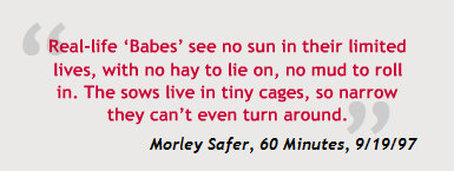|
by Betsy Seeton A dog's sense of smell is 1000 times stronger than a human's. The canine's heightened ability is helping sniff out bowel cancer through breath and stool samples. It turns out that different types of cancer cells have their own distinct odor that a trained Labrador has been able to very effectively detect. The test revealed an astounding accuracy rate between 95% to 98%. This applies to even early stages of the cancer, which is being hailed as the holy grail because early detection offers the best cure rates.  photo: www.irishviews.com/brown-labrador.html By Boonsri Dickinson | Feb 3, 2011 | smartplanet.com Like Popular Science said: Training dogs is another issue all together. CSIRO researcher Trevor Lockett told ABC.net.au While training dogs to identify cancer with their incredible sniffing ability might be impracticable as a scalable medical screening procedure, it’s reasonable to think that one day sensors could do the dirty work. An electronic nose (see article below) can detect tumors in its earliest stages. But can researchers design a system that can recreate what goes on when a dog uses its super sense of smell? The dog might be smelling a number of different compounds - and this might be hard to recreate with sensors. A number of groups are honing in on the precision of the systems to detect a slew of cancers and to identify the threat of hazardous substances. I wrote about Stanford chemists who created an e-nose that can sniff out anything from sour milk to explosives. Breath test can detect cancer By Boonsri Dickinson | Aug 11, 2010 Smartplanet.com Scientists developed a breath test prototype that can identify the four most common forms of cancer: lung, bowel, breast, and prostate. The Technion Israel Institute of Technology researchers tested 177 people — some were healthy, while others suffered from breast, bowel, lung, or prostate cancer, reports The Guardian. More tests will be needed to see if the breath test works in cases when the cancer status isn’t known. The electronic nose could tell if a person has healthy or cancerous breathand detected which kind of cancer the person had. It’s the gold nanoparticles in the sensors that can sniff out chemicals. When tumors begin to grow, the cancerous cells emit chemicals unique to that type of cancer. And it will take a few years for scientists to hone down the accuracy of the test. The breath tests would be far less troublesome than mammograms and stool tests. So using the electronic nose in addition to imaging could ease the burden of uncomfortable, regular checkups.
0 Comments
Your comment will be posted after it is approved.
Leave a Reply. |
Animal Rights & Welfare
Posts by Betsy Seeton "The animals of the world exist for their own reasons. They were not made for humans any more than black people were made for white, or women created for men." ~Alice Walker The source of the quote is Walker's preface to Marjorie Spiegel's 1988 book, "The Dreaded Comparison" . Her next sentence was, "This is the gist of Ms. Spiegel's cogent, humane and astute argument, and it is sound." Archives
November 2018
Categories
All
|










 RSS Feed
RSS Feed
